
The Bone Studio and Gallery ... 
Jade, Stone, Gemstone and Hypertufa
Stone
One of the premises I have always worked under is
"It's not what can you carve, it's what can't you carve?"
The answer being pretty close to nothing. I've even seen some amazing things carved out of toothbrush handles! It's a massive task to give detailed information on everything that has ever been hacked into by someone with a chisel or a chainsaw ... but here goes!
The following is a brief description of what you can carve:
Jade/Pounamu
a.k.a. Nephrite Jade, Serpentine and Bowenite Greenstone
Jade found in New Zealand is the mineral nephrite, a composition of calcium and magnesium silicate.
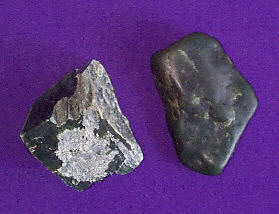
Pounamu is the Maori word for Jade and a similar, softer stone called Bowenite, a type of Serpentine. It varies greatly in colour, clarity and texture and, while it has been referred to as Greenstone, a lot of it is NOT green! NZ Nephrite Jade can be green, black, white and even nearly blue with a great range of inclusions. With this variety comes up to 200 names given by the Maori although only about 20 are commonly used. It is this variation that is one of the best ways to distinguish genuine Pounamu from imported stone arriving from China, British Columbia and Russia. If you can't see a good variety in the stone found at a retail outlet, the chances are most, if not all, is imported.
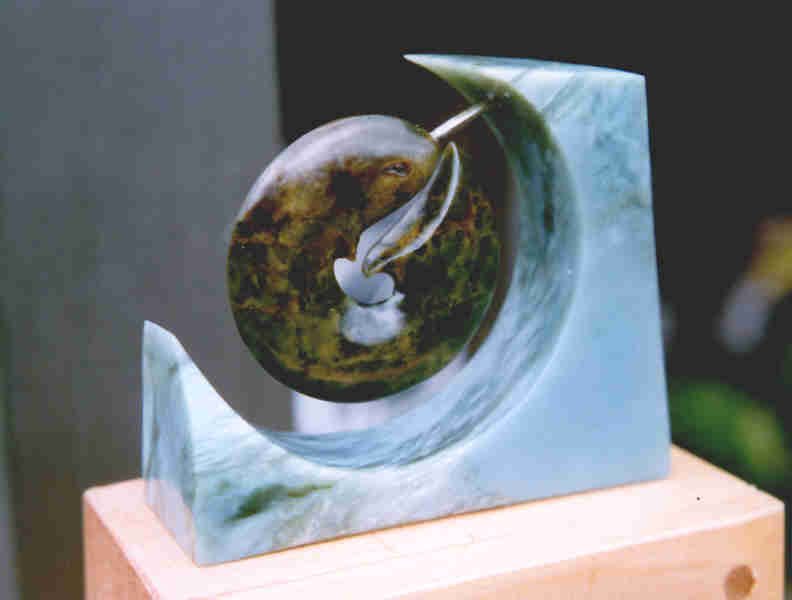
Nephrite Jade was used for tools and ornaments by Maori while Bowenite (Tangiwai or Tear Water) was only used for jewellery due to its softness. It was worked by rubbing on sandstone with water and drilled using a centrifugal drill with obsidian, flint or quartz bits, aided by the addition of fine quartz sand and water as the hole progressed. Sandstone "files" were used for detail and polishing achieved with fine grits and eventually oil -- usually from the carver's and wearer's skin. This whole process took anywhere from weeks to years to generations depending on the purpose and significance of the piece. With such energy going into each creation, they are said to absorb that energy and become a record of what happens to its owners. It is, therefore, important that the carving "feels good" when created, purchased and passed on.
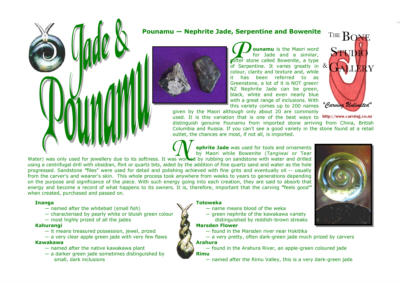 Jade descriptions in PDF(322Kb) |
- Inanga
- — named after the whitebait (small fish)
- — characterised by pearly white or bluish green colour -- most highly prized of all the jades
- Kahurangi
- — it means treasured possession, jewel, prized
- — a very clear apple green jade with very few flaws
- Kawakawa
- — named after the native kawakawa plant
- — a darker green jade sometines distinguished by small, dark inclusions
- Totoweka
- — a translation of the name means blood of the weka
- — green nephrite of the kawakawa variety distinguished by reddish-brown streaks
- Marsden Flower
- — found in the Marsden river near Hokitika
- — a very pretty, often dark-green jade much prized by carvers
- Arahura
- — found in the Arahura River
- — apple-green coloured jade
- Rimu
- — named after the Rimu Valleo along the Arahura River
- — a very dark-green jade
Stone
Apart from nephrite jade (pounamu), the most common stones carved in NZ are oamaru stone (limestone), Hinuera stone (ignumbrite), andesite, granite, basalt, greywacke, argillite, marble (takaka) and Pumice.
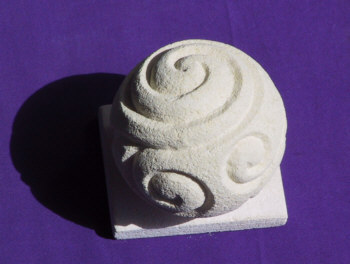
- Oamaru Stone
- — a fine, clean limestone capable of holding very good detail and clean finish.
- Hinuera Stone
- — Hinuera Stone or Ignumbrite is a volcanic/metamorphic stone quarried at Hinuera, close to the Coromandel Peninsula. It is a creamy colour with some variation in texture and available in any size.
- Andesite
- — another volcanic/metamorphic stone usually greyish or greenish (maratoto) in colour.
- Granite
- — a speckled stone often sourced here on the Coromandel at Fantail Bay. This variety may also be called a Rhyolite.
- Basalt
- — There is some very nice fine grained black Basalt around NZ and in particular at Opito Bay just north of Whitianga where there is an ancient quarry where Ngati Hei (local tribe) collected, worked and traded the 'Onewa' around the North island.
- Greywacke
- — a more common, fine grained and hardened siltstone found in many places. I source some from the Kaiaua area or sometimes for small bits, my local 'garden stone' supplier!
- Argillite
- — Argillite of several colours is found in the Nelson region and was originally used for tool-making particularly as it was hard and could be 'knapped' to produce blades, or ground on sandstone to make 'Toki' (adzes).
- Takaka Marble
- — Also in the Nelson region on Takaka mountain is a huge amount (a 'mountainful') of beautiful, large grained and often banded, white marble.
- Pumice
- — a very light volcanic stone that floats! It's hard to find large pieces for carving but is easy to work and weathers well for outside sculpture.
| Examples of Ian's Hinuera Stone Sculptures | |
|---|---|
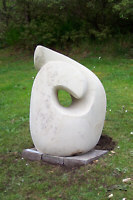 |
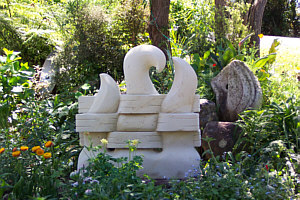 |
| Protection/Support by Ian Thorne |
Growing Together by Ian Thorne |
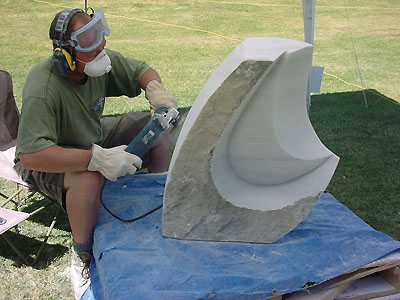 Working with rock (Takaka Marble) |
 Ian: The Happy Carver (aka "Dusty") |
|---|
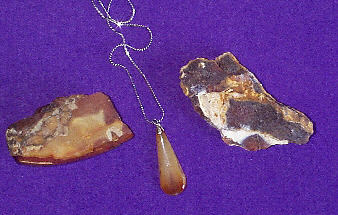
Gemstones are worked in a similar fashion to jade (with diamond saws and drills) and, with the wide variety available in New Zealand, it is a very interesting field to work in and has much variation and potential for the collector. Those gemstones worked regularly are Carnelian, Obsidian, Tigers Eyes, Tiger Iron, Bloodstone, Agates, Quartz and petrified wood. Really, the theme again is "Carving Unlimited" with gemstones.
Hypertufa
A mixture of peat, sand, shell, cement and anything else you'd like to throw in. It is mixed and then roughly moulded and, after 3-4 hours as it starts to "go off," it is carved. Hypertufa looks like stone.
I've been asked for the "recipe" so many times that ... well, here it goes:
Here is a basic recipe for tufa. It becomes hypertufa when you add extra texture such as shell or dirt, etc.
- 1 part cement
- 1 part sand
- 2 parts coarse peat
Mix well and add water until pliable & moist (not too wet). Mold into approximate shape and wait until it's starting to go off before carving it.
Dry carefully over a week.